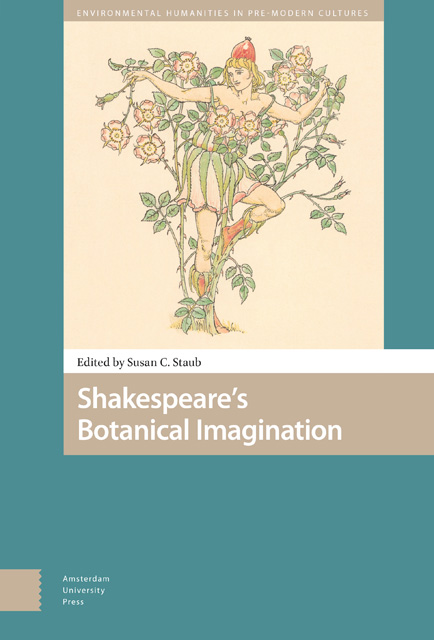7 - ‘Thou art translated’ : Plants of Passage in A Midsummer Night’s Dream
Published online by Cambridge University Press: 17 October 2023
Summary
Abstract
A Midsummer Night’s Dream abounds in plant life. This essay argues that just as the wood outside Athens demarcates a border between the city and fairyland, so many of the plants in the play either emblematize or were thought to facilitate passage from one state or place to another. Love-in-idleness may be described as “a little western flower,” but some of the other plants in the play come from the east; some are boundary plants; and some were thought to give access to fairyland or to alternative states of mind. There is also a trio of plants (thyme, mulberry, and pansy) which are sometimes white but may be changed to purple either magically or by natural means, figuring transition.
Keywords: fairylore, transplantation, boundaries, transition, hallucinogens
A Midsummer Night’s Dream abounds in plant life. It refers to between thirty and forty separate plants or flowers, and it has characters named Peaseblossom, Mustardseed and Quince. There is a modern rose called A Midsummer Night’s Dream, and one of the plants in the play has become so famous that it has acquired virtually a life of its own: on February 14, 2002 The Daily Telegraph ran an article explaining that the plant-based love potion used by Oberon on Titania, Lysander, and Demetrius wouldn’t actually work, as if anyone had ever seriously supposed that it might. In this essay I argue that just as the wood outside Athens demarcates a border between the city and fairyland, so the plants found in the wood also belong in two spheres, the scientific one of botany and the mystical one of fairylore; if the naturalist John Gerard is one of the play’s godfathers, the historian and antiquary William Camden is the other, since there is a potential parallel between the way plants are figured in the play and Camden’s interest in plants connected with Roman remains such as the Roman nettle and the Roman Wall plant.
- Type
- Chapter
- Information
- Shakespeare's Botanical Imagination , pp. 171 - 190Publisher: Amsterdam University PressPrint publication year: 2023



